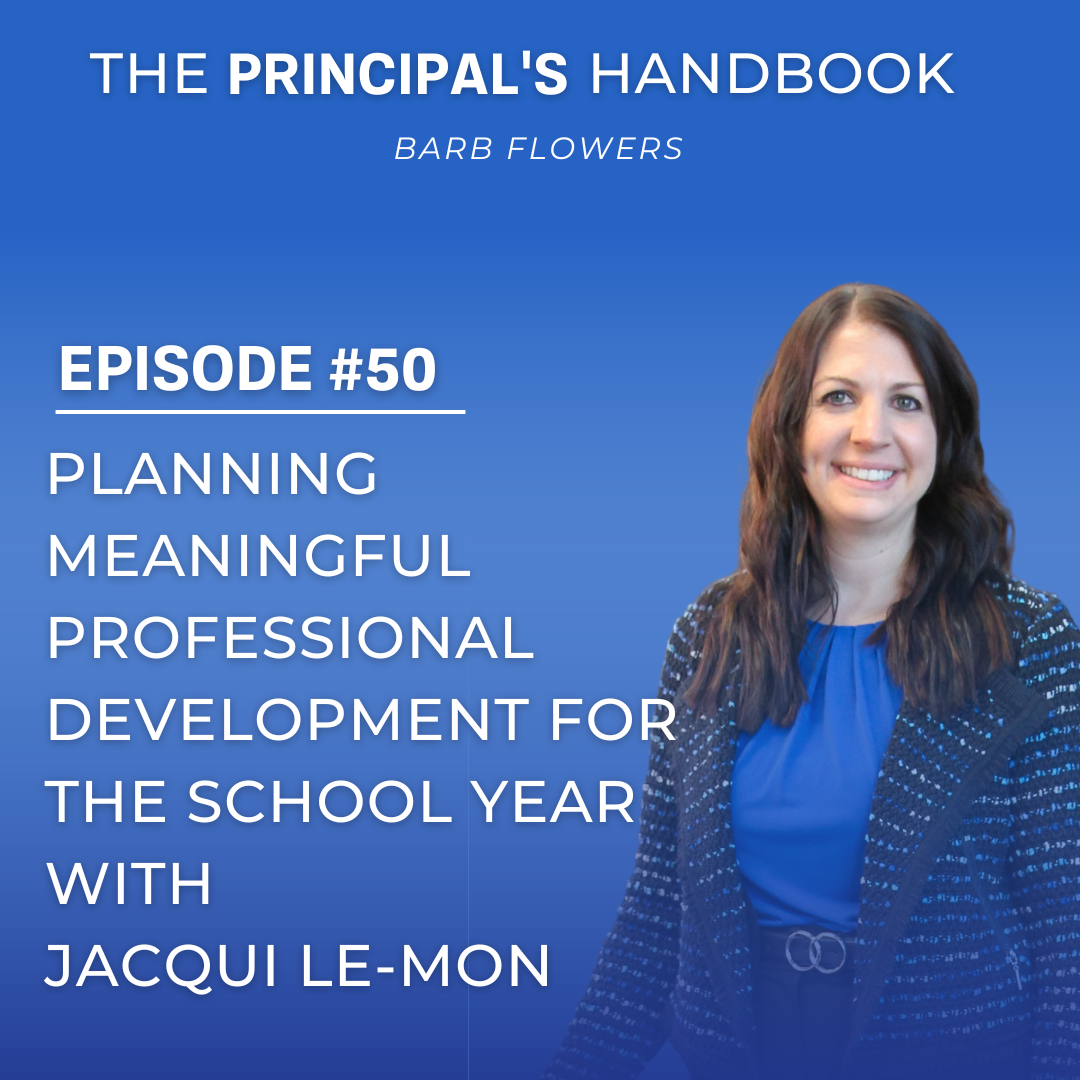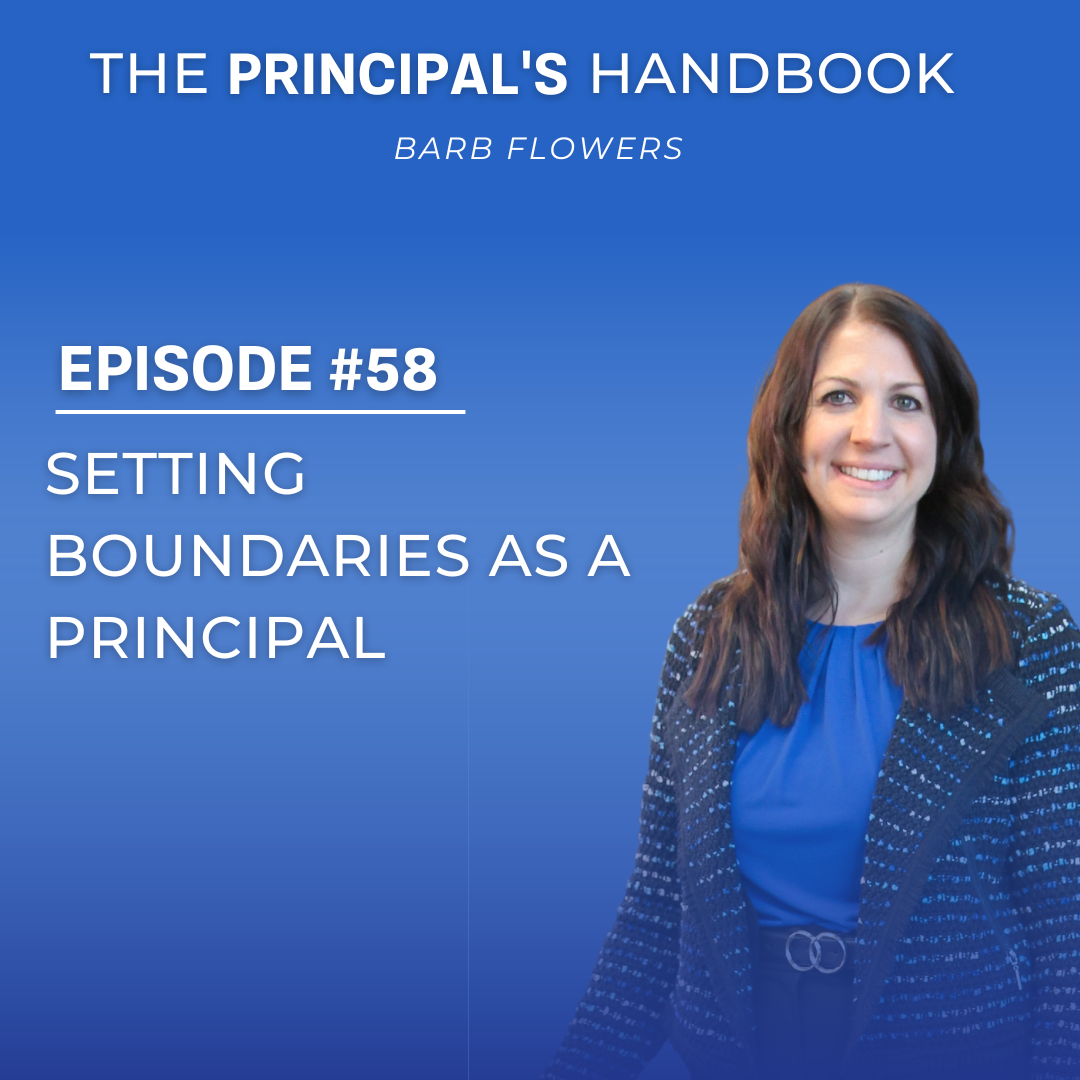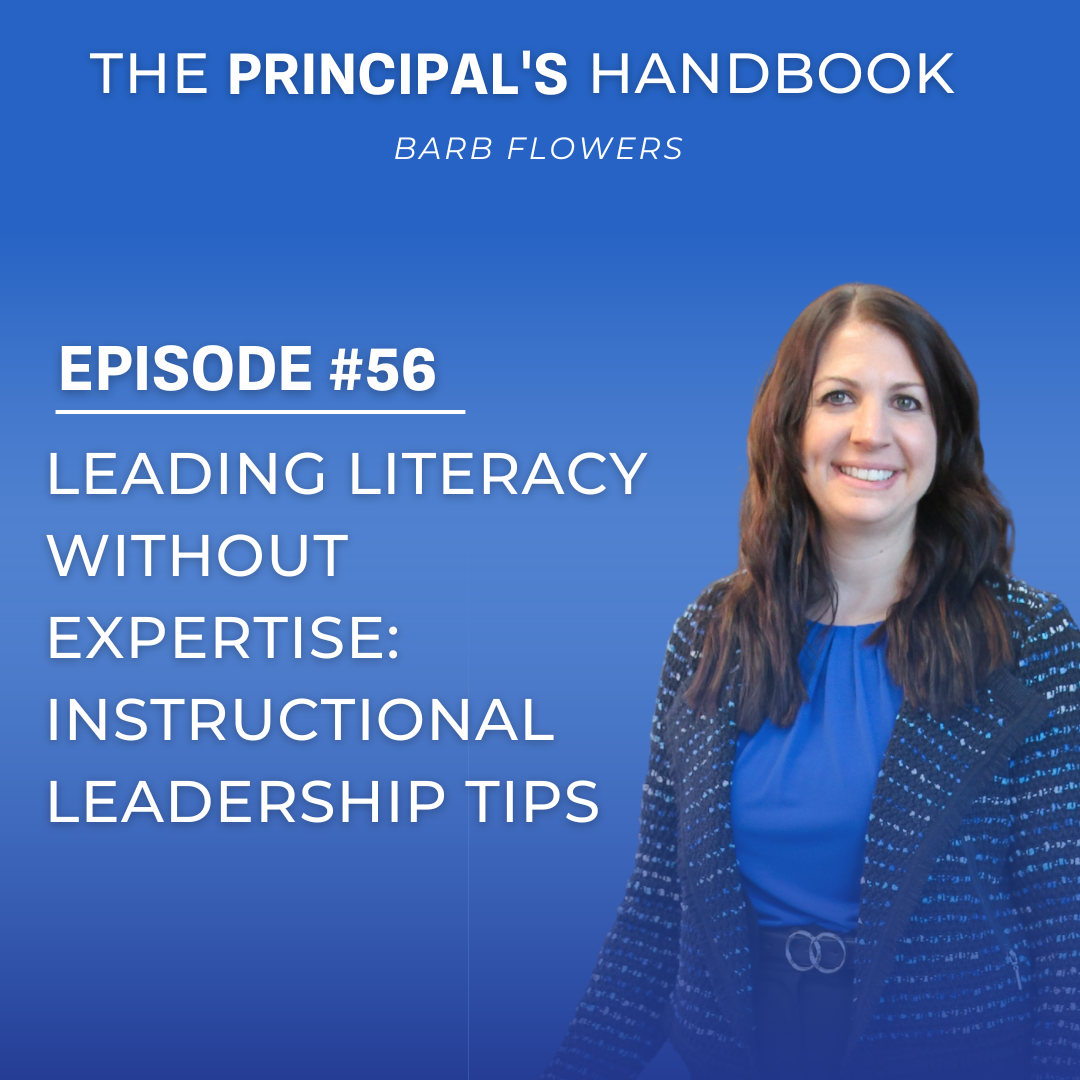[00:00:00]
Welcome to The Principal’s Handbook, your go-to resource for principals looking to revamp their leadership approach and prioritize self-care. I’m Barb Flowers, a certified life coach with eight years of experience as an elementary principal. Tune in each week as we explore strategies for boosting mental resilience, managing time effectively, and nurturing overall wellness. From tackling daily challenges to maintaining a healthy work-life balance, I’m here to help you navigate the complexities of school leadership. Join me in fostering your sense of purpose as a principal and reigniting your passion for the job.
Welcome to the Podcast!
I am thrilled to have my friend, Jacqui Le-Mon, with us today. Jacqui and I have been friends since elementary school and both went into education. We’ve had countless conversations about teaching, instructional leadership, and now, as administrators. Today, we’re going to discuss planning meaningful professional development (PD). Jacqui has a wealth of experience in curriculum and instructional leadership, and I know she has a lot to offer. Welcome, Jacqui!
Jacqui:
Thank you, Barb! I’m so excited to be here. It’s always a pleasure to chat with you. I’ve taught eighth grade, seventh grade, and worked with ninth graders. I moved into a curriculum coordinator role where I really got the chance to focus on professional development with staff. Then, I transitioned into an assistant principal role in elementary, and now I’m moving back to middle school. Throughout all of this, I’ve learned a lot about what makes PD meaningful and impactful for teachers, especially across different grade levels.
Barb:
I’m so glad to have you here. Let’s jump right in—how do you identify the specific professional development needs of your staff? Whether in your role as a curriculum coordinator or as an administrator, how do you assess what would best serve your teachers?
Jacqui:
Great question! One of the first things I do is gather data from the teacher evaluation process. Whether it’s through formal evaluations or informal walkthroughs, being in classrooms gives me a clear picture of what’s happening instructionally. For example, I once worked with a teacher who was new to our district but not new to teaching. She pointed out that we hadn’t really discussed how to use learning objectives in our school, which was something I hadn’t realized we hadn’t addressed. That feedback made me think about whether this was something we should focus on, not just for new teachers but also for our veteran staff.
It’s also important to consider district initiatives. For instance, in my current district, we follow a PLC model, and that’s something we continuously revisit in our professional development. So, knowing your district’s goals and the initiatives your school is working on really helps guide what PD topics to focus on.
Another key piece is gathering feedback directly from staff. For new teachers, sending out a quick survey or getting input before PD sessions can give you insight into what they feel they need. At the end of PD sessions, a brief survey or check-in can also help gauge effectiveness. I also make it a point to meet with the building leadership team or our guiding coalition to gather feedback and see what areas need attention.
Barb:
I love that you bring up those informal walkthroughs—getting into classrooms regularly is key. In my elementary school, we often saw that math instruction was an area where teachers needed more support, simply because we spent so much time focusing on reading. These observations helped us identify the need for more math PD and curriculum adjustments. PLCs, too, provide a natural space for these conversations, as teachers discuss data and share where they feel they need more support. It’s such a great opportunity for identifying PD needs organically.
Jacqui:
Exactly! PLCs are essential for identifying areas where teachers need more help. When you adopt new curricula, for example, PLCs are a natural space to discuss how well the curriculum is working. Teachers can bring up concerns about pacing, scope, or even content understanding. This helps you not only improve instructional strategies but also determine if more PD is needed.
Barb:
Absolutely. Now, there’s research that suggests teachers need at least 30 hours of PD to really become proficient at something. How do you make PD more meaningful and avoid it feeling too sporadic, especially when you’re covering multiple topics that aren’t always connected?
Jacqui:
It’s important to be intentional about PD. As you know, we can’t just throw out new topics every year and expect them to stick. PD needs to build on previous work. For instance, if we introduced a new unit planning protocol one year, the next year we should revisit it—not just have a one-time session, but continue reinforcing it in PLCs and in follow-up sessions. PD should always connect back to the ‘why.’ Why are we doing this? Why does it matter? Revisiting these tools consistently throughout the year ensures they don’t just disappear after one session.
And if you have too many initiatives at once, you dilute their effectiveness. Douglas Reeves, a well-known educator, says that if you have more than three initiatives, you essentially have no initiatives. So, prioritize and focus on what’s most important.
Barb:
I love that idea of revisiting and reinforcing PD. It’s so easy to get caught up in introducing new things each year without revisiting what was taught in the past. Keeping the focus and ensuring that everything connects will help PD feel more cohesive.
Jacqui:
Exactly. And for new staff, it’s important to provide some continuity. If we’ve done a book study or PD on a specific topic, it’s helpful to bring it up again for new teachers, so they aren’t left behind. That way, you maintain consistency and make sure everyone’s on the same page.
Barb:
Definitely. I always tried to make sure that new staff were brought up to speed on past PD initiatives. Documentation and tracking what’s been covered is so important for that.
Jacqui:
Yes, and when planning PD, always consider the different needs of your staff—especially specialists. It can be tough to find meaningful PD for them, like for art, PE, or music teachers. It’s important to make sure their PD is just as relevant as what you offer classroom teachers. One of the keys is getting feedback from these specialists to ensure their needs are met.
Barb:
That’s such a good point. How do you ensure that PD is meaningful for specialists, and not just “filler” time?
Jacqui:
The key is to get feedback from specialists about what they truly need. Sometimes they have their own certifications or mandatory trainings, and as administrators, it’s important to acknowledge that. Be intentional about scheduling PD that applies to everyone, but also respect when their time is better spent in training specific to their roles.
Barb:
Absolutely. Scheduling with intention and giving teachers enough notice is crucial. As principals, we need to be organized so staff can be prepared and get the most out of their time.
Jacqui:
Definitely. Teachers’ time is valuable, and being organized helps ensure PD isn’t wasted. Give clear agendas and prepare materials in advance to keep things running smoothly.
Barb:
I love all of this advice. As we wrap up, what’s one of the most valuable PDs you’ve delivered to teachers?
Jacqui:
One of my most rewarding experiences was delivering PD during the early days of COVID when we were shifting to hybrid and remote learning. I had to learn tech tools myself, and then I created an interactive document to teach staff how to use them. It was a lot of work, but it was so rewarding because it was exactly what staff needed at the time. Another great example was a three-session PD on formative assessment, where teachers brought their own assessments and we workshopped them together. It’s always meaningful when teachers can walk away with something they can immediately use.
Barb:
Those sound like fantastic PD sessions—timely and practical! Thank you so much for sharing your expertise today, Jacqui.
For anyone interested in reaching out to Jacqui, I’ll include her contact information in the show notes. Thanks again for listening to The Principal’s Handbook. I hope you found these tips helpful as you plan your PD for the school year.
If you’re a principal seeking to elevate your leadership and well-being, I’m here to help. My one-on-one coaching offers clarity and personalized support to help you build resilience and improve your leadership effectiveness. Reach out to me on Instagram @BarbFlowersCoaching or visit barbflowerscoaching.com for more information.
And if you loved today’s episode, leave a review on Apple Podcasts and share it with a friend.
Remember, you have the power to shape your life according to the mindset you choose. Have a great week, and I’ll see you back here next time.






